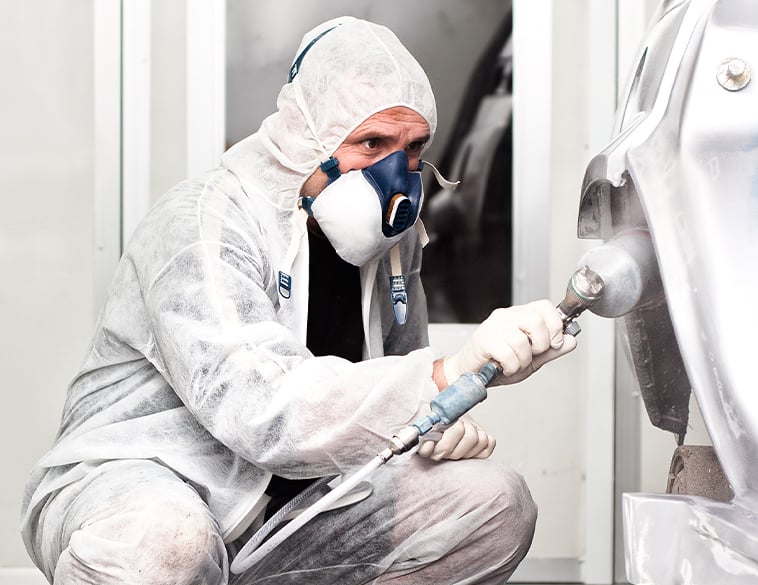The repair of a vehicle is made up of a multitude of complex steps that represent potential sources of efficiency losses.
There are so many body shop performance indicators and steps to analyze that a manager can quickly get lost.
The experts consulted on this subject recommend a simplified and gradual approach.
“You can’t control everything,” says Anouar Bélganche, National Sales Manager of Norton St-Gobain. “There will always be unforeseen disruptions, but it’s up to the shop manager to put a plan in place that takes into account shop capacity and choke points.”
He gives as an example the painting room, often a funnel in the studio. If the paint department processes the equivalent of two cars per hour, it should see 16 cars per day.
“If you paint the equivalent of ten, there’s a problem in the chain of operations.”
Accept and deliver vehicles every day
According to Bélganche, this loss of productivity is often the result of poor work planning from the start. The notion of picking up wrecked cars on Monday and delivering them on Friday is the source of many problems.
“You have to accept vehicles and deliver them every day,” he summarizes. Then establish and measure each step from receipt to delivery of the vehicle.
“There needs to be guides, like at McDonald’s. The vehicle drop-off time should be 25 to 30 minutes, for example. If we’re constantly overflowing, we need to know why. And if it’s faster, we need to see if all the questions have been asked of the customer.”
Collision networks offer several computerized tools to track performance indices. As Yves Robichaud, Area Director, CARSTAR Quebec illustrates, “the computer has taken over what the manager previously held only in his head.”
Assessing capabilities
Rémi Michaud, Operations Specialist, CARSTAR Quebec, summarizes, “increasing productivity is all about calculating shop floor capacity and planning accordingly.”
“You have to estimate five days of production and spread the work out over time. That may mean bringing in a heavily damaged car in the middle of the week.”
He agrees with Bélganche in identifying the paint room as the main bottleneck in the production flow. Michaud notes that maximizing hours worked is the key.
Michaud understands that collision shop managers are constantly in the thick of things, but he encourages them to take a step back and look at the bigger picture.
“You can’t always chase red lights, you have to find the cause. I believe in a continuous improvement approach where steps can be improved on a permanent basis.”
Methodical approach
This is also the type of methodical approach recommended by Sonia Bouthillette, Vice President of Operations, Fix Network.
“Above all, we must avoid acting on perceptions,” she cautions. “You have to put numbers to understand, and a manager has to find the indicators that will be useful in making positive adjustments to their operations.”
Bouthillette mentions that collision shops have access to shop management systems that compile various data for them.
But if they’re intimidated by that, she suggests simply opening an Excel spreadsheet and entering the hours billed versus the hours available, for example. Then gradually introduce other elements such as the cost of parts and materials, volumes and extras.
“You have to learn to walk before you run,” she says. “You don’t have to be an expert. It’s also important to get the whole team involved in the process. Everyone needs to understand why you want to measure performance.”
In her experience, there is much to be gained in terms of efficiency by better planning of inputs.
“I don’t understand why we still see customer vehicles sitting in the parking lot for a week before the shop touches them. If the car is drivable, the customer will come back later. We need the body shop to take control of their schedule.”
Taking the time at the start
Another determining factor, according to Bouthillette, is the estimation phase. “We’re talking about managing expectations. Making a good estimate, taking the time and getting down and dirty, going out and probing the unseen with the goal of reducing extras and delays is the starting point.”
Les Pawlowski, General Manager, Symach, suggests an interesting approach.
“You can determine the time needed to complete each task, which is possible with management systems. Body shops can work with their banner to support them in this process.”
“Knowing the shop’s capabilities, they can set monthly, weekly or even daily goals. With realistic goals, it is easier to identify problem areas that can be corrected. It could be parts ordered too late or a need for training for a technician.”
Pawlowski also recommends holding all team members accountable. Installing a large monitor where you can see the progress of the work, which is not yet common practice in our workshops, is an easy way to see which vehicles are falling behind.
“And when the system is efficient and we’ve eliminated the friction points, we add one car a week, just to see. Then another. Until a new bottleneck appears and we find a solution,” notes Pawlowski.



